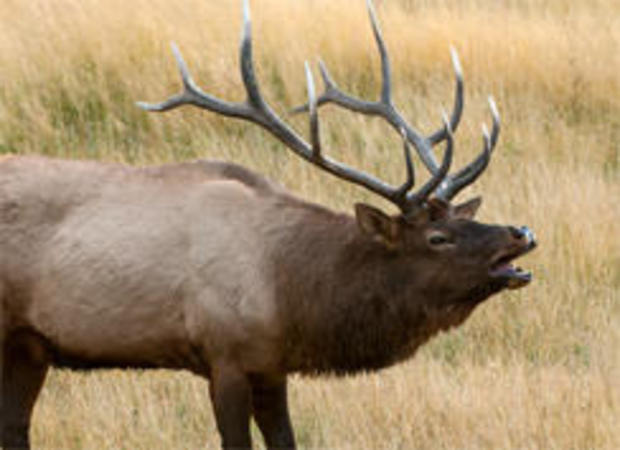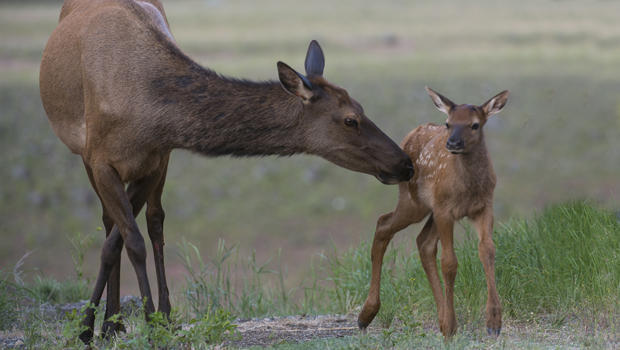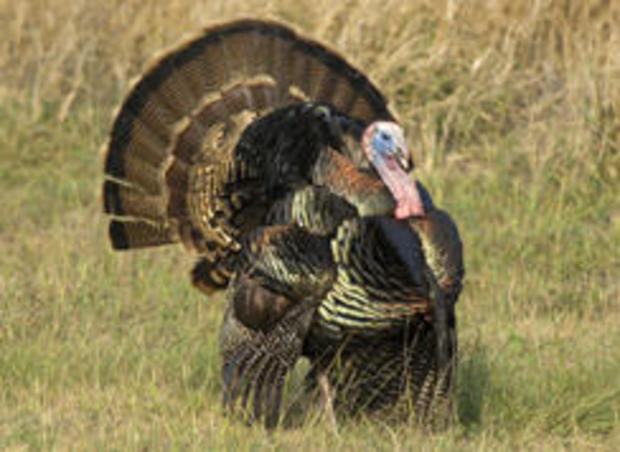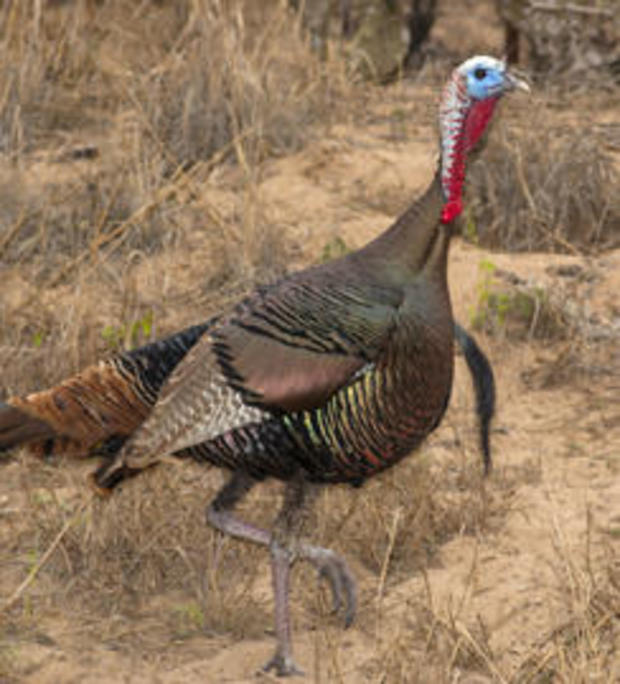Nature up close: Elk and wild turkeys
By “Sunday Morning” contributing videographer Judy Lehmberg.
The Great Smoky Mountains, which make up a part of the Appalachian Mountains along the border of North Carolina and Tennessee, are home to two species which have made successful comebacks in this region, after their numbers had been decimated by overhunting and habitat loss.
At first glance wild turkeys and elk don’t appear to have much in common, but they actually share a very similar history in the U.S. If you looked for either species east of the Mississippi River about 120 years ago, you wouldn’t find any elk and very few wild turkeys. They were both virtually extirpated from the East and much of the Western U.S. by destruction of habitat (primarily due to excessive logging) and overhunting.
Elk once roamed almost all of what is now the United States, with an estimated population of 10 million before Europeans settled here. Following European settlement and westward expansion, the elk population east of the Mississippi River was pushed out and hunted eventually to extinction.
During the early 1900s Theodore Roosevelt and others started a conservation movement, attempting to mitigate the loss of habitat and overhunting that had all but wiped out many birds and mammals. A number of eastern states began rebuilding their elk herds from several western sources, including Yellowstone National Park.
Today there are an estimated one million elk in the U.S., with the vast majority in the west, but elk numbers in the East are increasing. About 15 years ago, 25 elk from Tennessee and Kentucky were introduced into the Great Smokies, with another 20 introduced two years later. This was a successful transplant, as the herd has now grown to about 200 individuals.
In the fall, male elk go into rut, when they spend most of their time collecting female elk into a harem and mating. The males bugle to establish their territory and protect their females from rival males. When I hear an elk bugle, I know the hot days of summer are over and the leaves will soon be turning color. In June of the following year, the pregnant females give birth to their new calves, which usually stay with them until the following spring.
The history of wild turkey in the United States is not dissimilar to that of the elk. Both were extremely common when European settlers came to North America, declined with European expansion, and have rebounded with our help. At the beginning of the 20th century the total U.S. turkey population was probably around 30,000 individuals. Now, with more protection and reintroductions, that population has grown to seven million individuals.
We all know the turkey is the most common symbol of Thanksgiving, but the turkey we eat now usually comes from a grocery store. It is the same species as the wild turkey but has obviously been raised in captivity. Years ago my husband shot a wild turkey a few days before Thanksgiving. We showed up at his parent’s house and proudly showed off the specimen he shot. In comparison to a “grocery store” turkey, a wild turkey is a fairly skinny affair. His mother dutifully cooked the wild one, but insisted on having her already-purchased turkey as well. As we all sat down to dinner, we looked down at the big, juicy grocery store turkey next to the really skinny wild one.
I want you to know that wild turkey was some of the best meat I have ever eaten. It had more flavor in one bite than that fat one had in its whole body. I think we should all raise our own Thanksgiving turkeys. Let them wander around and eat bugs, and I guarantee you will have a more flavorful bird for Thanksgiving.
You have probably heard that Benjamin Franklin wanted the wild turkey to be on the Great Seal of the United States rather than the bald eagle. During the formative years of the U.S. there was much discussion amongst our founding fathers as to what bird best typified our country. Benjamin Franklin never publicly voiced his opinion, but in a letter to his daughter written in 1784, he said the bald eagle was “a bird of bad moral character” that “does not get his living honestly.”
I don’t know if anyone can truthfully say a bird has bad moral character, but Franklin was at least partially right: Bald eagles will steal fish from osprey any time they can. Franklin went on to say the wild turkey was “in truth a much more respectable bird, and withal a true original native of America. He is besides, tho’ a little vain and silly, a bird of courage, and would not hesitate to attack a Grenadier of the British Guards who should presume to invade his farm yard with a red coat on.”
We know Franklin didn’t win that argument, but I like to think he would be proud to know how many wild turkeys live in his United States of America today.
Judy Lehmberg is a former college biology teacher who now shoots nature videos.
For more info:
- Judy Lehmberg (Official site)
- Judy Lehmberg’s YouTube Channel
To watch extended “Sunday Morning” Nature videos click here!







